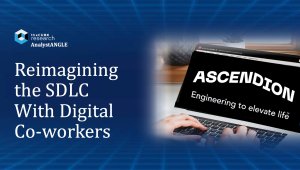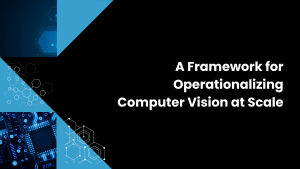Premise: Wikibon partnered with North Bridge Ventures, as well as 30+ technology leaders, to survey nearly 1000 Cloud Computing practitioners about their current experiences and future expectations for Cloud Computing usage. The survey validated a number of on-going trends (e.g. SaaS is the dominant Cloud Computing consumption model) as well as providing insight into the shifts towards usage of emerging technologies such as SDN, PaaS and DBaaS. Insight into the “why” of Cloud Computing planning and spending were highlights of the survey, along with feedback about the top inhibitors that will prevent increased usage of Cloud Computing resources in the future.
The full 2015 Future of Cloud Computing survey presentation, video discussion and CrowdChat community discussion can be found here.
Customer Strategies
Private Cloud-only strategies are in decline, and Hybrid Cloud is evolving and growing. But IT organizations still aren’t sure what Hybrid Cloud means or how best to use it. Over the past 5 years, the focus of IT organizations has significantly shifted from Private Cloud strategies (-48.4%) to Hybrid Cloud (+19.2%) or Public Cloud (+43.3%) consumption models. This not only aligns to changing need for greater business agility, but also aligns to Wikibon’s contention that IT organizations need to hold their Private Cloud plans to a higher standard.

IT organizations are looking to evolve beyond basic IaaS services (SDN, PaaS, DBaaS). As Public Cloud providers such as AWS, Azure and Google continue to add new services, more companies are beginning to experiment with emerging Cloud technologies such as SDN (23%), PaaS (52%) and DBaaS (38%). This highlights that IT organizations are being pushed by development teams to keep up with the pace of innovation in the Public Clouds. It also illustrates that automated, API-driven, software-centric technologies are driving the agenda for future IT projects.


IT organizations are getting more educated about the value of Cloud, but concerns about Security/Privacy are still high. While scalability is still the primary focus of cloud projects, the market has become better educated regarding the value of business agility vs. IT cost reductions. Survey respondents are also beginning to understand that Cloud Computing is less of an area of innovation, and more of a requirement for any new IT project. They are beginning to understand that there are no longer business projects that don’t have a significant technology component, and that they must be better prepared to respond within the timeframes needed to execute new business initiatives.

But as 2015 comes to a close, Security (63%), Compliance/Regulatory (63%), Privacy (56%) and Performance (52%) are still top concerns and inhibitors to widespread Public Cloud usage. These are areas that are full of opportunities for companies to not only deliver innovative technology, but also educate both IT and business leaders about how to minimize these barrier to success.

Follow the Money
Over the past 4-5 years, Venture Capital firms are primarily investing in SaaS startups. VMware is very likely the last (new) major software vendor to primarily sell on-premises products. IT organizations will need to learn how to deal with SaaS, either directly or through platforms that integrate SaaS applications with existing applications. Unlike the dot-com period of the late 1990s and early 2000s, where startups would often raise $50M and spend the first $5M (CAPEX) on infrastructure, VCs are now mandating that infrastructure spending be directed to public cloud services and OPEX spending models. This not only lowers the barrier of entry for startups, but also it reduces VC risk and has a negative impact on traditional IT vendors that were often the recipients of that CAPEX spending.

In discussions with IT organizations, Wikibon has often found that SaaS spending is often controlled by groups outside of IT. While IT may get involved in some aspects of SaaS usage, such as Active Directory integration, it is an area that many IT organizations feel is a blindspot for them and a concern about data management and security.
Cloud Computing is Moving Beyond Computers
Cloud Computing is being embedded in the majority of physical products and often becoming the differentiation of those products. More companies are beginning to offer Cloud Computing services for their customers. For many years, Cloud Computing was associated with digital products and websites. But that is evolving as computing functionality is being embedded in nearly every new physical product. This low-cost computing capability is beginning to unlock new, differentiated experiences for physical products. For example, automotive companies BMW (Apple), Mercedes (Pivotal Cloud Foundry), Tesla and others now have initiatives to enable new applications to deliver a better in-vehicle experience, as well as improvement on-going maintenance. This is an industry, that for decades, attempted to differentiate their products based on sleek external engineering or gas mileage, but are now focusing on a completely different area of uniqueness.

The Impact to IT Vendors
Most customers are going directly to Cloud providers (IaaS, PaaS, SaaS). The buying supply-chain is being significantly disrupted. In the past, the buying process involved vendors, distributors, ISVs, system-integrators or VARs and in-house purchasing departments. The shift to on-demand public cloud services is radically changing not only the buying process, but impacting the companies that had previously been involved in the long supply-chain between vendor and customer.

These changes are having the following impacts on the buying process:
- Customers now have the option to choose from multiple on-demand (OPEX) pricing models, which can be billed from minutes to months to years, and has even involved into # of transactions (e.g. AWS Lambda).
- Pricing is becoming more transparent and publicly available to customers. This reduces the vendors ability to manipulate markets through a lack of information.
- Cloud Providers now have greater insight into customer usage, both through monitoring of their services, but also through the usage of applications and services that are purchased directly through their marketplaces. This insight is directly influencing future roadmaps and pricing. This level of insight was rarely available to IT vendors, who have limited ability to collect usage data directly from customers.
- Distributors, Systems Integrators and Value-Added Resellers can be disintermediated or eliminated from the buying process if customers do not believe they are providing enough added value. This is forcing these companies to look at new ways to engage customers or add value through training, planning, operations and application integrations. Accenture’s recent partnership with AWS is an example of this transformation.
Vendor consolidation is happening, and customers are using fewer vendors. As we saw with major 2015 activities such as the Dell acquisition of EMC, Cloud Computing is having a significant impact on all aspects of the IT industry. Survey responses highlighted that customers are looking to work with less vendors than in the past, as they attempt to simplify overall operations and be more focused on creating business value rather than being an internal system integrator.

Action Item: The move to Cloud Computing is no longer a technology discussion; it has become a core competency that every modern business will need to embrace and excel at in 2016 and beyond. IT organizations need to build stronger relationships with internal business groups to understand how technology is impacting their business, products and services. And IT organizations need to accelerate their skill-set evolution to be better prepared to manage Hybrid Cloud environments, emerging technologies and the expectations of Public Cloud “like” experiences for all new services.


